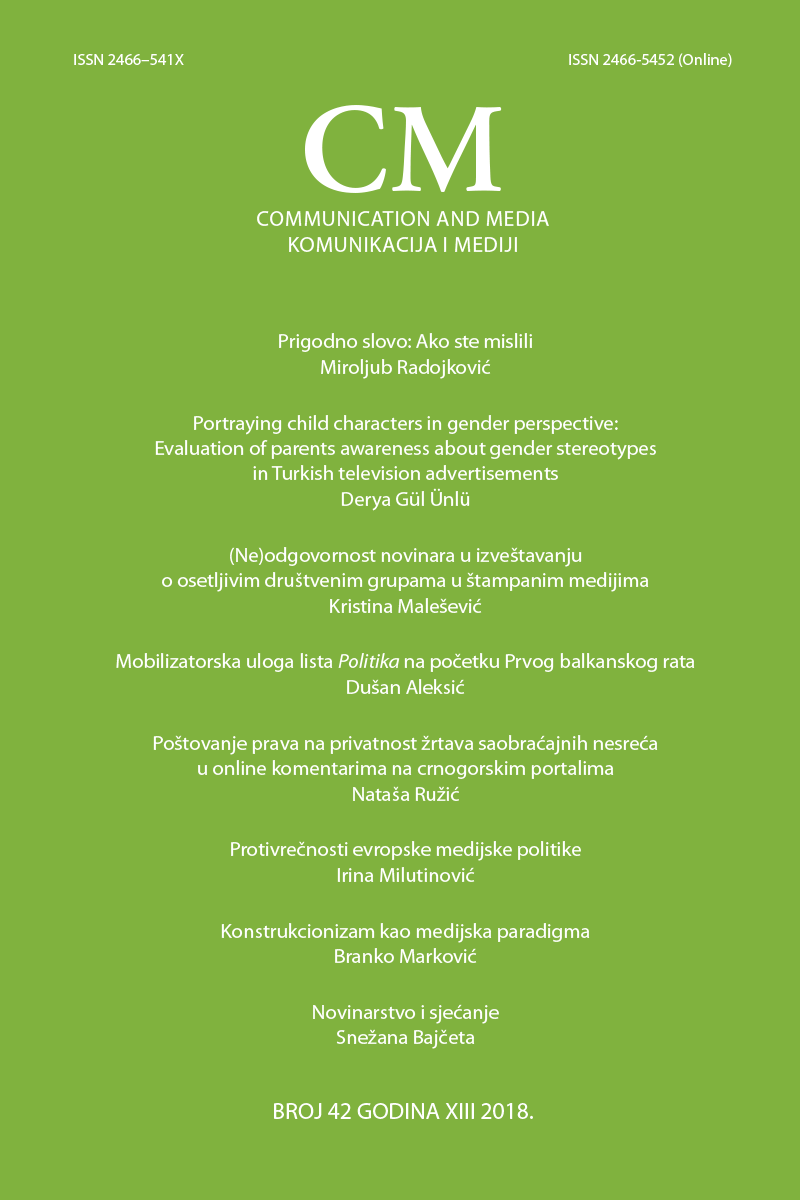PORTRAYING CHILD CHARACTERS IN GENDER PERSPECTIVE: EVALUATION OF PARENTS AWARENESS ABOUT GENDER STEREOTYPES IN TURKISH TELEVISION ADVERTISEMENTS
Abstract
As individual becomes a part of social life, he/she starts to learn and interiorize gender roles determined by social structure. Like all social structures, this gender distinction can also be found in media content, because media products are both produced by individuals, who have cultural codes, and also reflect the values of the target audience addressed in order to attract attention. When media products are analysed as the reflectors of gender relations, it can be suggested that child roles used in television advertisements are dependent of these relations. Seeing advertisements between or during the programs he/she watches on television, the child perceives boys and girls as symbolic models. Therefore, investigating the awareness of parents about the contents of television advertisements their children watch, and children's tendencies to take the contents in television advertisements as models is considered important. For this reason, the study aims to investigate parents' opinions about taking these roles as models and their awareness about the connection between these roles and gender relations through child roles presented in television advertisements. Face-to-face interviews were conducted with 20 parents of male and female children between the ages of 7-14. As a result of the research, it was determined that parents do not consider child representations in advertisements realistic, they are aware of the gender-based distinctions between child characters in advertisements, and they are of the opinion that television advertisements have short term effects on children.
Copyright
Authors retain copyright of the published papers and grant to the publisher the non-exclusive right to publish the article, to be cited as its original publisher in case of reuse, and to distribute it in all forms and media.
Licensing
The published articles will be distributed under the Creative Commons Attribution ShareAlike 4.0 International license (CC BY-SA). It is allowed to copy and redistribute the material in any medium or format, and remix, transform, and build upon it for any purpose, even commercially, as long as appropriate credit is given to the original author(s), a link to the license is provided, it is indicated if changes were made and the new work is distributed under the same license as the original.
Users are required to provide full bibliographic description of the original publication (authors, article title, journal title, volume, issue, pages), as well as its DOI code. In electronic publishing, users are also required to link the content with both the original article published in CM: Communication and Media and the licence used.
Authors are able to enter into separate, additional contractual arrangements for the non-exclusive distribution of the journal's published version of the work (e.g., post it to an institutional repository or publish it in a book), with an acknowledgement of its initial publication in this journal.
Self-archiving policy
Authors are permitted to deposit author’s publisher's version (PDF) of their work in an institutional repository, subject-based repository, author's personal website (including social networking sites, such as ResearchGate, Academia.edu, etc.), at any time after publication.
Full bibliographic information (authors, article title, journal title, volume, issue, pages) about the original publication must be provided and links must be made to the article's DOI and the license.
Disclaimer
The views expressed in the published works do not express the views of the Editors and the Editorial Staff. The authors take legal and moral responsibility for the ideas expressed in the articles. Publisher shall have no liability in the event of issuance of any claims for damages. The Publisher will not be held legally responsible should there be any claims for compensation.

